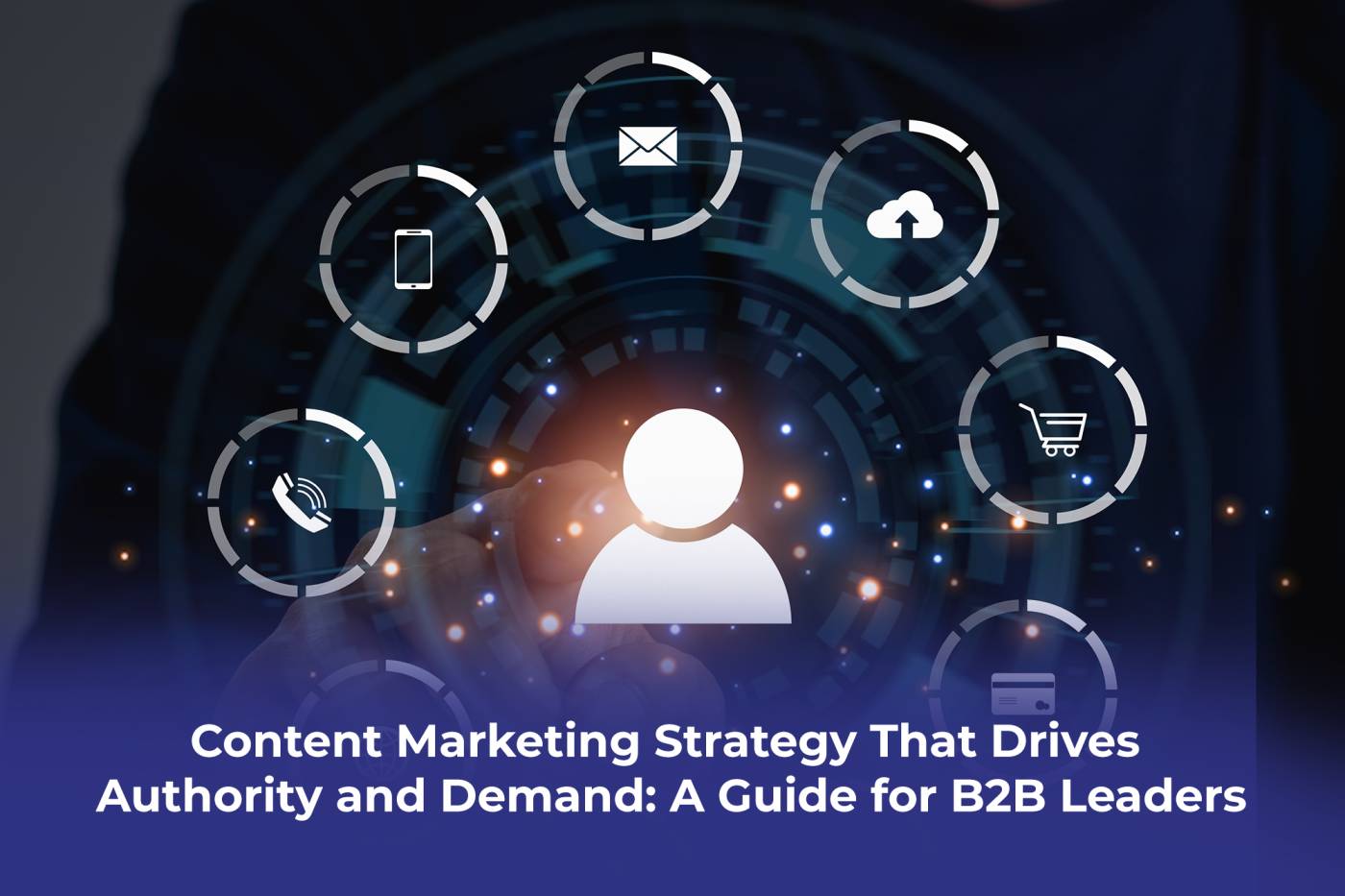Summary
Today’s enterprise buyers expect more than blog posts; they want insights, relevance, and consistency across every stage of their journey. A strong Content Marketing Strategy isn’t just a marketing function; it’s a business growth engine. This guide breaks down how B2B leaders can plan content that drives measurable demand, builds brand authority, and fuels ongoing performance.
Why Your Content Marketing Strategy Needs an Upgrade
In an era where enterprise buyers research more and trust less, B2B companies can’t afford vague content plans. A clear, measurable Content Marketing Strategy helps teams build relevance across channels, deliver value to complex buying committees, and align every asset to business goals.
Yet many brands still struggle with fragmented efforts, random blogs, disconnected messaging, or campaigns that ignore the buyer’s whole journey. It’s not about producing more content; it’s about building a connected narrative that drives both authority and demand.
1. Align Content to Buyer Stages and Demand Goals
An effective Content Marketing Strategy starts with mapping content to each stage of the buyer journey, from awareness to conversion to advocacy. Understanding where content fits across the demand generation strategy ensures relevance and progression.
Ask.
- What’s stopping our buyer from moving forward?
- What questions are they asking at this stage?
- What format best fits their context?
B2B buyers don’t convert on a single interaction. Strategy ensures each piece plays a role in a much larger decision cycle.
2. Focus on Content That Builds Authority
In saturated markets, relevance alone isn’t enough. Enterprise brands must create thought leadership content that signals authority and earns trust. This includes:
- Opinion-led POV articles
- Strategic research or benchmarking
- Frameworks unique to your approach
The goal is not just education, but influence. Strategic content builds familiarity, increases credibility, and reduces perceived risk for decision-makers.
3. Prioritize Distribution and Promotion Planning
Even great content fails when distribution is an afterthought. A winning Content Marketing Strategy includes clear plans for content distribution channels, owned, earned, and paid. Examples include:
- LinkedIn lead-form posts
- Strategic email drips
- Partner amplification
Treat distribution as part of creation, not something that comes after. B2B attention is limited; visibility must be designed into the process.
4. Brand Voice and Messaging Consistency
Your brand voice and messaging should feel unified across blogs, whitepapers, web pages, and social content. A strategy ensures tone, vocabulary, and themes are consistent even when different teams or writers are involved.
Think beyond style; your content should reflect positioning, values, and personality in a way that resonates with both technical users and C-suite stakeholders.
5. Plan for Measurement and Content ROI
A smart Content Marketing Strategy includes frameworks to track content performance metrics and prove content ROI. This goes beyond traffic or impressions, it’s about:
- Influence on pipeline velocity
- Content-assisted conversions
- Engagement depth and quality
CMOs must be able to answer: Is our content moving the business forward? If not, what needs to change?
Who We Build Content Engines For
At Proton Effect, we help marketing teams move from scattered content to structured strategies that support pipeline and positioning. Our work aligns voice, value, and visibility, without shortcuts. We don’t just create content; we help define the role it plays in your business growth model.
Conclusion:
For enterprise brands, Content Marketing Strategy isn’t a buzzword; it’s a blueprint for building authority, generating demand, and aligning teams around shared business goals. It bridges messaging, distribution, and performance into a single, structured approach that drives sustainable growth.




